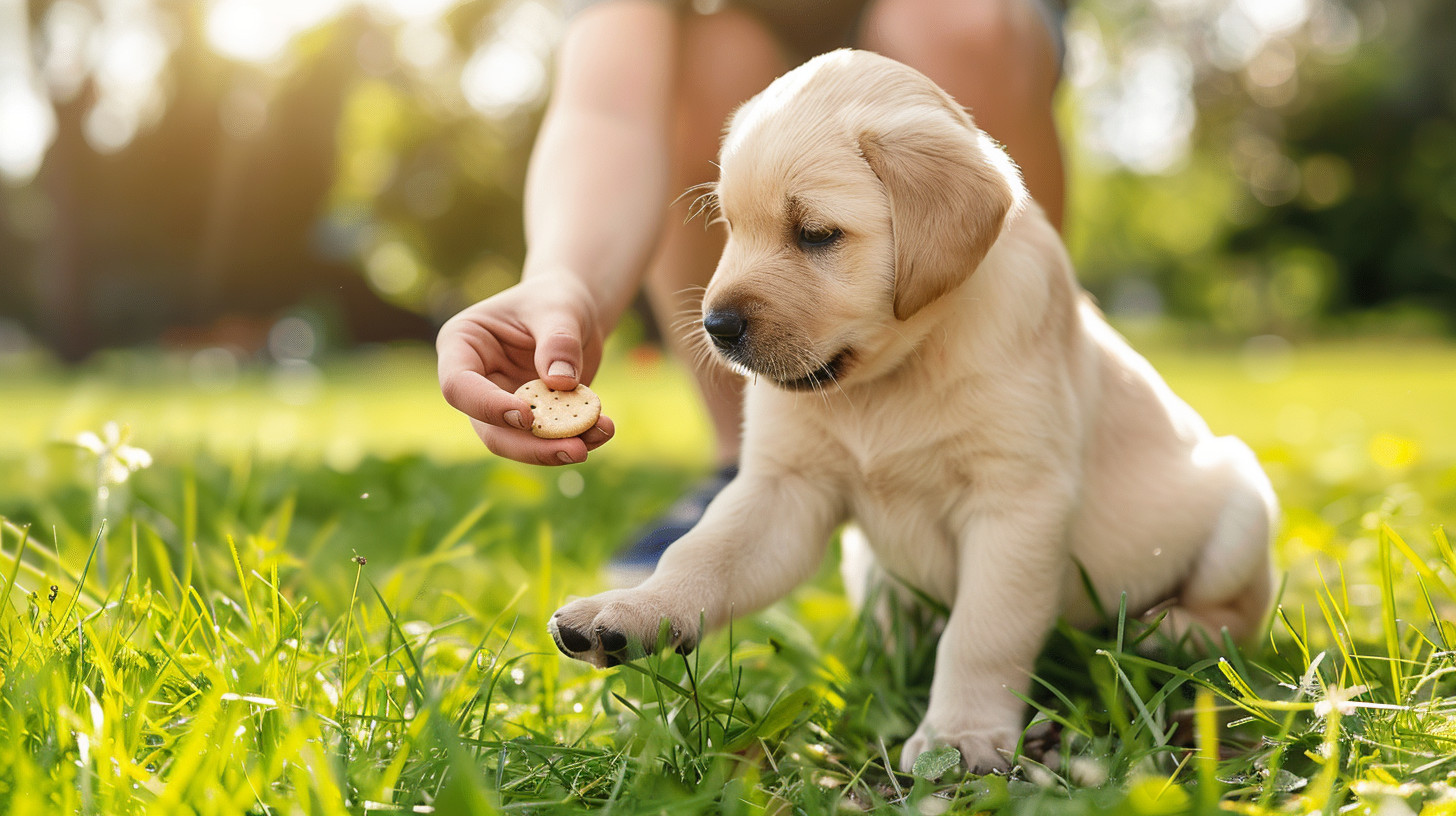
Essential Techniques in Puppy Training
Welcome to the exciting journey of puppy training! Training your puppy is not just about teaching them obedience but also about fostering a nurturing bond and understanding that lasts a lifetime. Puppies, much like human infants, require patience, consistency, and positive reinforcement to learn effectively. In this article, we will explore various essential techniques that can help make training your furry friend a rewarding experience for both of you. We will delve into everything from basic command training to more advanced skills and behavioural corrections. It’s crucial to start training early as this sets the foundation for your pup’s future behaviour and his ability to cope with different situations. Understanding the right techniques and when to apply them can significantly ease the training process.
Fun Fact: Did you know that puppies can start learning simple commands like “sit” as early as 7 to 8 weeks of age?
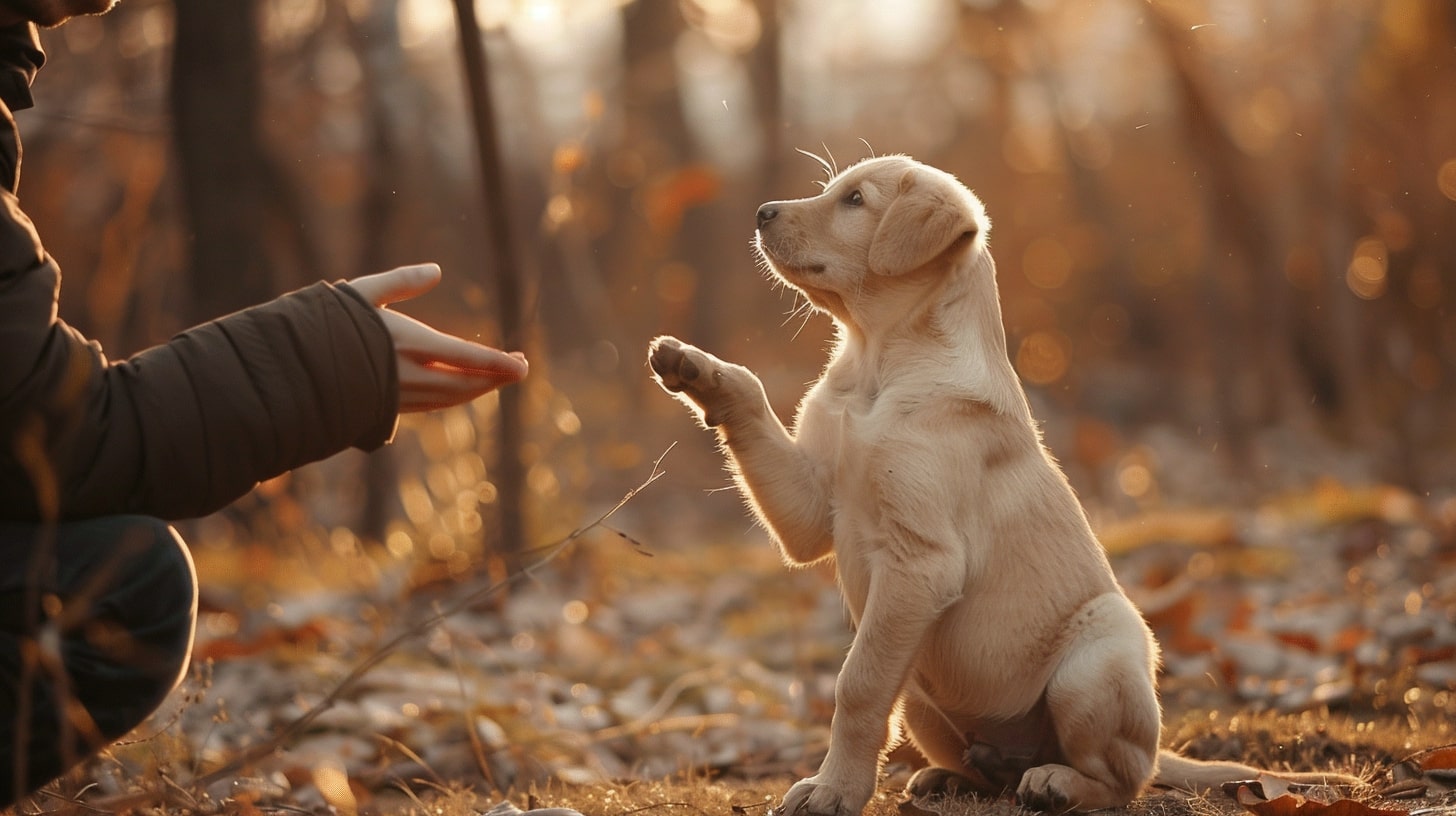
Preparing for Puppy Training
Essential Supplies for Training
Before you begin the training sessions, it is imperative to gather all the necessary supplies. A well-equipped training kit should include:
- Treats: Small and tasty rewards for positive reinforcement.
- Collar: A comfortable and fitting collar to ensure safety during training.
- Leash: A sturdy leash is essential for outdoor training and walks.
- Clicker: A training clicker can be an effective tool for marking desirable behaviours.
- Training Pads: For house training, especially if you’re living in an apartment.
- Chew Toys: To keep them occupied and away from unwanted chewing.
With these tools in hand, you’ll be well-prepared to guide your puppy through the various stages of training.
Setting Up a Training Space
Creating an appropriate environment for training is critical. You’ll want a space that allows you to train with minimal distractions and interruptions. The space should be:
- Quiet – away from the hustle and bustle of the household.
- Spacious – enough room for the puppy to move around freely.
- Safe – free from any hazards or items that could harm the puppy.
- Consistent – Same time and place for each training session
This designated space not only helps in reducing distractions but also helps the puppy associate the area with learning and obedience.
Pro Tip: Consistency is key in training. Try to schedule your training sessions at the same time and place to help your puppy establish a routine.
Core Training Techniques
House Training
House training is perhaps the first challenge that new pet owners face. The goal is to instill good bathroom habits and prevent accidents. This can be achieved through:
- Crate training: Introduce your puppy to the crate gradually to create a personal, safe space.
- Regular schedules: Take your puppy out at specific times throughout the day.
- Praising and rewarding: Always reinforce positive behaviour with treats and verbal praise.
It’s essential to be patient during this process as accidents are inevitable. However, with persistence, your puppy will learn where it’s appropriate to relieve themselves.
Basic Commands Training
Training your puppy to follow basic commands is crucial. Begin with simple commands such as:
- Sit: This is usually the first command taught and lays the foundation for more complex commands.
- Stay: Essential for managing your puppy in various situations.
- Come: This command can help keep your puppy out of trouble and is vital for recall.
- Heel: Teaches your puppy to walk nicely on a leash.
Use consistent commands and reward your puppy immediately after they follow the instruction correctly. This reinforces their learning and makes training sessions more enjoyable.
Did You Know: Dogs process commands through the tone and pitch of your voice, not just the words themselves.
Socialization Skills
Socializing your puppy is essential for developing their emotional intelligence and adaptability. Effective socialization involves gradually exposing your puppy to various environments, sounds, people, and other animals. Key points include:
- Start early: The prime socialization period for puppies is between 3 and 14 weeks of age.
- Go slow: Introduce new experiences in a controlled manner to avoid overwhelming your puppy.
- Monitor reactions: Always watch for signs of fear or aggression and retreat if necessary.
Proper socialization can prevent many behavioural issues in the future by ensuring your puppy grows into a well-adjusted adult dog. 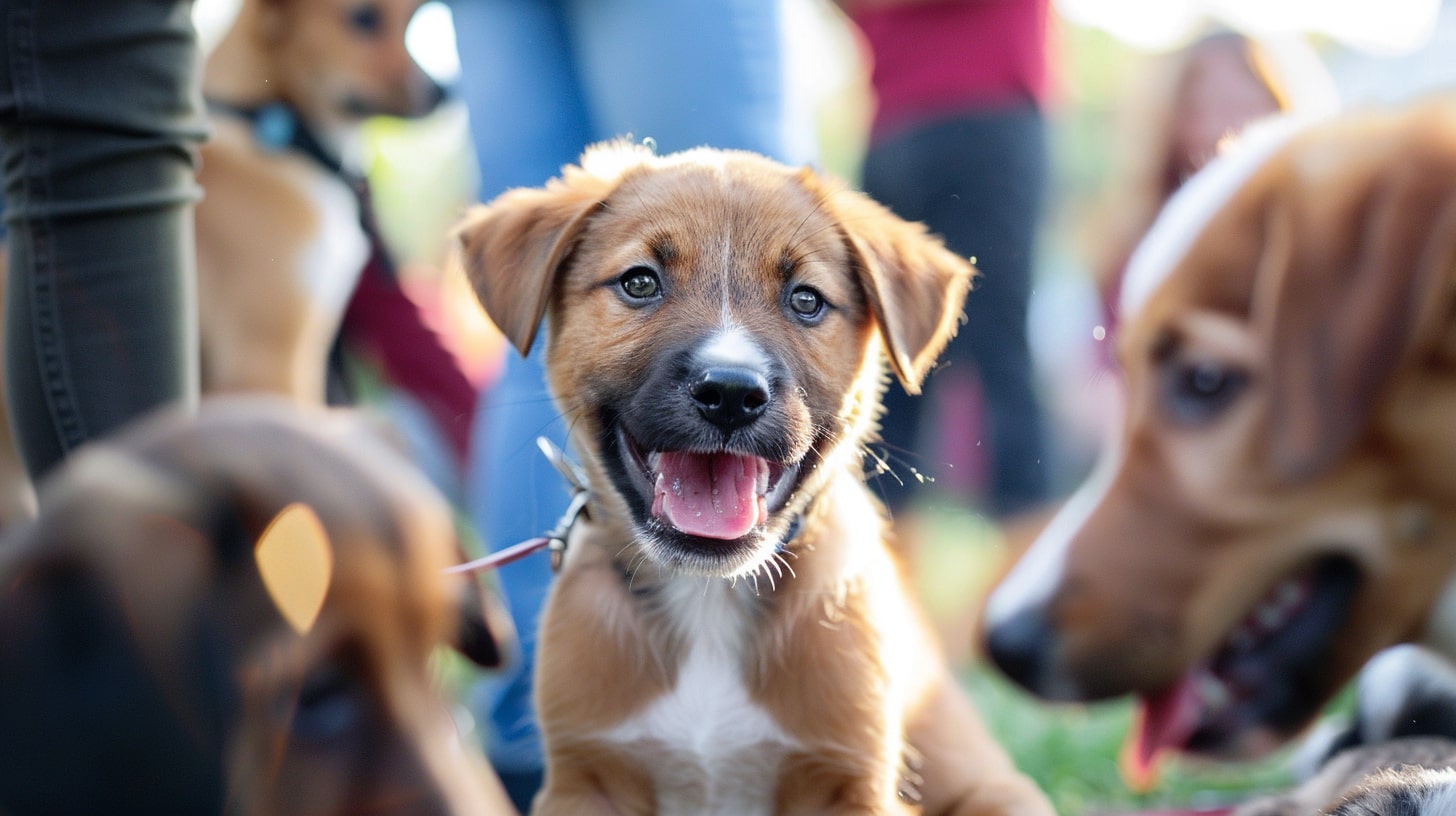
Behavioural Correction Techniques
Biting and Nipping
Puppies explore the world through their mouths, and biting is a natural behaviour during the teething phases. However, it’s important to teach them what is acceptable to bite and what is not. Techniques to mitigate biting include:
- Redirecting: Offer chew toys instead of your hands or clothes.
- Yelping: Mimic the cry of a hurt littermate to teach your puppy that they are being too rough.
- Ignoring: If biting continues, turn away and ignore them to show that biting leads to negative consequences.
Consistency with these techniques will help your puppy learn appropriate biting behaviour and ensure they develop into a gentle companion.
Jumping Up
Jumping up is a common issue that arises out of excitement or the desire for attention. Training your puppy to remain calm and keep all four paws on the ground is essential. Techniques include:
- Ignoring the behaviour: Do not acknowledge your puppy when they jump; only give attention when all paws are on the ground.
- Positive reinforcement: Reward calm behaviour with treats and affection.
- Consistent commands: Use a clear and firm command such as “off” to discourage jumping.
Maintaining these practices will ensure your puppy greets people politely, enhancing social interactions.
Barking Management
Understanding why puppies bark is crucial to effectively managing this behaviour. Common reasons for barking include excitement, seeking attention, and alerting to perceived threats. Strategies to manage excessive barking include:
- Teaching the “Quiet” command: Train your puppy to respond to a command that signals them to stop barking.
- Identify triggers: Recognize what provokes the barking and minimize exposure or desensitize your puppy to these stimuli.
- Attention management: Ensure you’re not inadvertently rewarding barking with attention, even if it is negative.
Effective barking management enhances the communication between you and your puppy and contributes to a harmonious home environment. 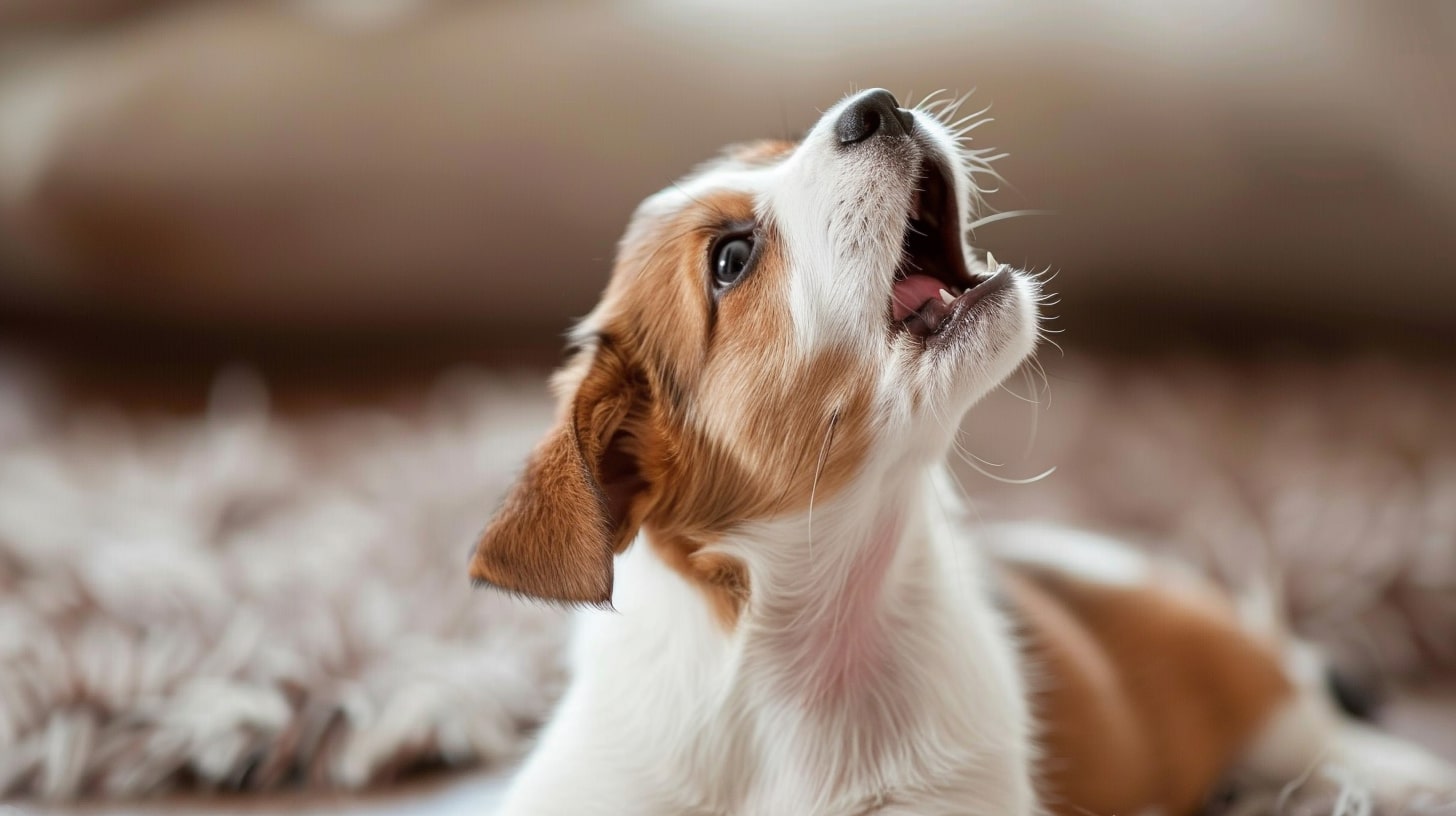
Advanced Puppy Training Techniques
Leash Training
Leash training is pivotal for safe and enjoyable walks. Here are some techniques to ensure a smooth leash training process:
- Introduce the leash and collar early: Allow your puppy to wear the collar and leash at home to get used to the feel.
- Use positive reinforcement: Encourage good leash behaviour with treats and praise.
- Start in a distraction-free environment: Begin training in your home or a quiet area before venturing into more challenging environments.
- Be patient and consistent: Keep initial walks short, rewarding good behaviour and gently correcting pulling.
Remember, the goal is to make leash walking a positive experience so that your puppy looks forward to their walks as much as you do.
Agility Training Basics
Introducing your puppy to agility training can be a fun way to build their confidence and burn off excess energy. Even if you’re not planning to compete, agility training can greatly benefit your puppy:
- Start with basic obstacles: Begin with simple tasks like tunnels or low jumps.
- Keep training sessions short and fun: Maintain your puppy’s interest and enthusiasm by keeping sessions short and rewarding.
- Foster a playful environment: Encourage your puppy through obstacles with toys and treats to associate agility training with fun.
Agility training not only enhances your puppy’s physical skills but also their ability to listen and follow commands under various conditions. 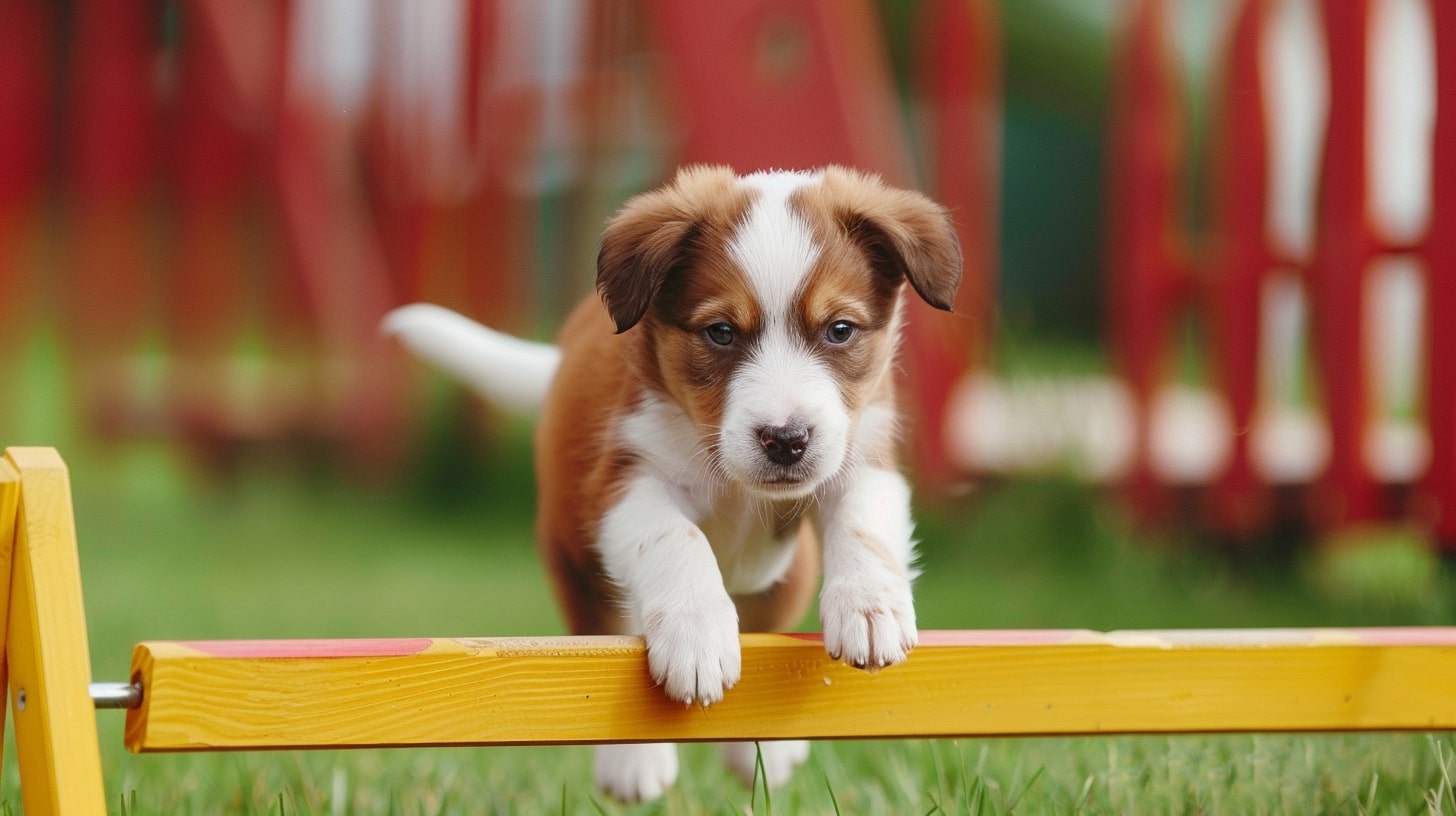
Maintaining Consistency and Patience
Consistency is the cornerstone of effective puppy training. Here’s how to ensure you’re being consistent:
- Regular training sessions: Keeping a regular schedule helps reinforce learning.
- Consistent commands: Use the same words for commands to avoid confusing your puppy.
- Patient repetitions: It can take several repetitions for a puppy to grasp and master a new command.
Patience is equally crucial. Some puppies may learn quickly while others may take more time. Understanding and accommodating your puppy’s pace of learning is essential for effective training.
Key Takeaway:Consistency and patience are not just training techniques—they are the principles that underlie all aspects of raising a well-behaved puppy.
Troubleshooting Common Training Issues
Not all training sessions will go smoothly. Here are some strategies to overcome common training hurdles:
- Identify signs of stress: Look for signs like panting, avoidance, or whining. These might indicate that your training approach needs adjustment.
- Adjust techniques: If a method isn’t working, don’t be hesitant to try different techniques that might be more effective for your puppy’s unique personality.
- Seek professional help if needed: Don’t be afraid to consult a professional dog trainer for guidance.
Adaptability is key in training. Being flexible and responsive to your puppy’s needs will help you successfully navigate any issues that arise.
Conclusion
Training a puppy is a rewarding journey that fosters a deep, lasting bond between you and your pet. We’ve outlined a path from preparing your home and choosing the right tools to establishing basic commands and addressing behavioural issues. With these strategies, you’re well on your way to raising a happy, well-mannered dog. We encourage all new puppy owners to persist with patience, consistency, and positivity. Your efforts will be rewarded with a loyal companion who is a joy to be around. We’d love to hear your training stories and any tips you’ve picked up along the way. Feel free to share your experiences in the comments section below!
Frequently Asked Questions
- What if my puppy is not responding to any training methods? Consider the possibility of a sensory impairment and consult a veterinarian. Also, experimenting with different rewards and training strategies can help.
- How often should I conduct training sessions with my puppy? Start with short sessions, about 5-10 minutes long, several times a day. As your puppy grows and their attention span increases, gradually extend the training time.
- Is it necessary to use treats during training? While treats are a powerful motivator, they are not mandatory. Affection, praise, and play can also effectively reinforce positive behaviour.
- What are the signs that my puppy is over-stressed during training? Excessive panting, drooling, avoidance behaviour, and sudden lack of responsiveness to commands can all be signs of stress.
- How can I train my puppy if I have limited time? Focus on integrating training into everyday activities. Teach commands during regular walks, meal times, or while playing.
